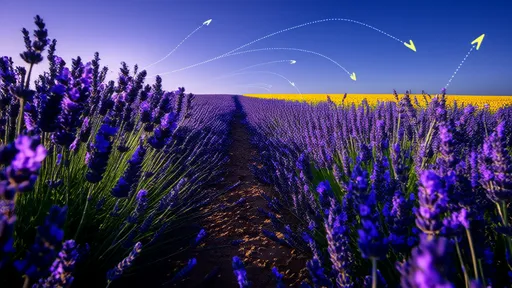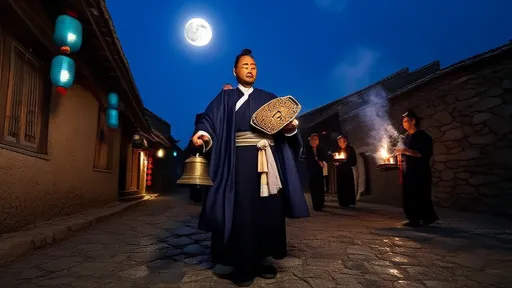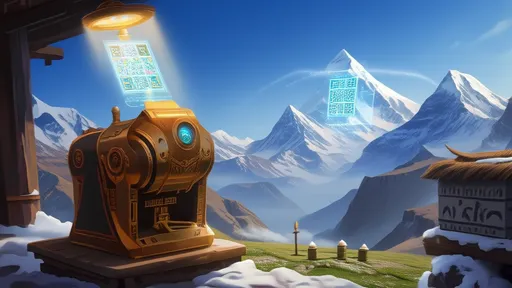The phenomenon of the Blue Moon has captivated human imagination for centuries, appearing as a rare celestial event that occurs only once every two to three years. Unlike its name suggests, the moon does not actually turn blue; instead, the term refers to the second full moon within a single calendar month. Across cultures, this lunar rarity has inspired a myriad of local rituals, many of which remain shrouded in mystery and tradition. From whispered incantations to communal feasts, the Blue Moon serves as a temporal marker for practices that bridge the mundane and the mystical.
In the remote highlands of Scotland, the Blue Moon is known as the "Witch’s Moon," a time when the veil between worlds is said to thin. Villagers in the region still observe an ancient rite called "The Lighting of the Ash." As dusk falls, families gather around bonfires fueled by ash wood, believed to carry protective properties. The eldest member of the community recites a Gaelic blessing, while participants toss handfuls of dried herbs into the flames. The smoke, thick with the scent of sage and thistle, is thought to carry prayers to the spirits. This ritual, passed down through generations, is said to ensure prosperity and ward off misfortune until the next Blue Moon.
Meanwhile, in the coastal villages of Japan, the Blue Moon holds a different significance. Fishermen in Wakayama Prefecture perform the "Tide Caller’s Dance," a rhythmic movement accompanied by drums and chanting. Legend holds that the Blue Moon’s gravitational pull amplifies the tides, and the dance is meant to honor the ocean’s power. Participants wear indigo-dyed robes, a color symbolic of both the sea and the moon’s elusive hue. Offerings of rice and salt are cast into the waves, a gesture of gratitude and a plea for safe voyages. The ritual culminates with the sharing of sakabashira, a sacred sake brewed only under the light of a Blue Moon.
In Mexico, the Blue Moon is intertwined with themes of remembrance. The indigenous Nahua people of Puebla observe "La Noche de los Antepasados," or "The Night of the Ancestors." Families construct altars adorned with marigolds, candles, and photographs of departed loved ones. Unlike the more widely known Día de los Muertos, this ceremony is exclusive to the Blue Moon and focuses on communing with ancestors through dreams. A unique feature of the ritual is the preparation of tlaxcalteca, a special cornmeal cake infused with vanilla and honey, said to ease the journey of spirits visiting the living. The night is spent in quiet vigil, with participants refraining from sleep until the moon sets.
The Blue Moon also plays a pivotal role in the agrarian traditions of Ethiopia’s Amhara region. Here, it marks the beginning of "Qené Zema," or "The Poet’s Harvest." Farmers and poets gather in open fields to recite verses composed during the growing season, blending agricultural wisdom with artistic expression. The most revered poems are those that mention the Blue Moon, as it is considered a harbinger of abundant rains. A communal meal of teff bread and spiced honey wine follows, symbolizing the union of earth and sky. This ritual underscores the deep connection between celestial cycles and the rhythms of rural life.
Less documented but equally fascinating are the whispered traditions of the Appalachian Mountains in the United States. Among certain families, the Blue Moon is referred to as the "Truth Moon," a time when hidden things are revealed. A peculiar custom involves placing a silver coin under the tongue while standing at a crossroads at midnight. The participant then speaks a question into the wind, and the direction from which the answer comes—whether in the form of an animal’s cry or a shift in the breeze—is believed to hold significance. This practice, likely rooted in Celtic folk magic brought over by early settlers, persists in isolated pockets of the region.
What unites these disparate rituals is their temporal specificity. Unlike annual celebrations tied to solar cycles or seasonal changes, Blue Moon traditions exist in a liminal space, activated only when the heavens align in this particular configuration. They serve as reminders of humanity’s enduring fascination with the cosmos and our attempts to ascribe meaning to its mysteries. In an age of artificial lighting and digital distractions, these ceremonies offer a fleeting opportunity to reconnect with older rhythms—to look up and marvel at a moon that is, for one brief night, both familiar and extraordinary.

By /Jul 16, 2025

By /Jul 16, 2025

By /Jul 16, 2025

By /Jul 16, 2025

By /Jul 16, 2025

By /Jul 16, 2025

By /Jul 16, 2025

By /Jul 16, 2025

By /Jul 16, 2025

By /Jul 16, 2025

By /Jul 16, 2025

By /Jul 16, 2025

By /Jul 16, 2025

By /Jul 16, 2025

By /Jul 16, 2025

By /Jul 16, 2025

By /Jul 16, 2025

By /Jul 16, 2025